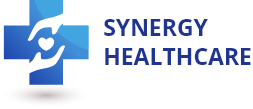Effective financial management is critical to the viability and expansion of the healthcare business, a complex and multidimensional area. Medical coding is a vital activity affecting each revenue cycle step and is central to this complex financial ecosystem. Medical coding plays a critical role in correct revenue generation and the overall economic health of healthcare organizations, starting from the first patient registration process and ending with the final payment for services given. This article examines the intricacies of medical coding in healthcare and how it affects the revenue cycle, providing insightful analysis and useful advice for maximizing revenue cycle management. Healthcare providers can improve their financial performance and guarantee long-term success by comprehending and refining this crucial element of the medical billing system.
What is Revenue Cycle Management in Medical Coding?

Revenue Cycle Management in all clinical and administrative tasks that capture, manage, and collect patient care fees are included in revenue cycle management or RCM. RCM aims to guarantee that healthcare providers receive payment for their services through a sequence of actions, including initial patient registration, appointment scheduling, and ultimate balance payment.
Medical Coding is a vital component of this procedure. It converts medical procedures, diagnoses, and services into widely recognized alphanumeric codes. The revenue cycle depends on the accuracy and efficiency of medical coding in revenue generation since these codes are utilized for insurance claims and billing.
Impact of Medical Coding on the Revenue Cycle
- Accuracy in Billing and Claims: Correct medical coding guarantees that medical professionals are paid fairly. Coding mistakes can result in underpayments, delays, or claim denials, all of which harm the revenue cycle.
- Regulatory Compliance: Accurate medical coding helps healthcare practitioners comply with regulations more easily. Non-compliance may further disrupt the revenue cycle, resulting in severe financial penalties and legal problems.
- Effective Claims Processing: Accurate and timely medical coding makes it easier to process claims effectively. This shortens the payment turnaround time, improving healthcare organizations’ cash flow and financial stability.
- Data-Driven Decision Making: The useful data generated by medical coding can benefit performance analysis and strategic planning. Healthcare providers can pinpoint development opportunities and enhance their revenue cycle management tactics by examining coding patterns and trends.
- Decrease in Rework: Time-consuming and expensive rework is less common when initial coding is done accurately. Healthcare providers can lessen administrative expenses and increase overall efficiency by doing things correctly the first time.
Tips for Optimizing Revenue Cycle Management
- Invest in Training: Provide medical coders with ongoing education and training to keep them up to date on the most recent coding guidelines and regulatory changes. This can enhance compliance and drastically lower coding errors.
- Leverage Technology: By implementing cutting-edge medical coding solutions, you may improve accuracy, expedite the coding process, and reduce the time spent on manual coding chores. Particularly helpful technology is computer-assisted coding (CAC).
- Continual Evaluations: Errors in medical billing and coding can be found and fixed with the support of routine audits, which can prevent negative effects on the revenue cycle. Audits also offer a chance to evaluate the efficacy of present procedures and make the required modifications.
- Improve Communication: Accurate coding and billing depend on clear communication between coders, billers, and healthcare providers. Creating strong communication channels can help resolve disagreements and guarantee that everyone agrees.
- Hire Outside Help When Needed: By collaborating with a reputable medical coding company like Synergy HCLS, you can access skilled coders and cutting-edge equipment, enhancing the revenue cycle management system’s accuracy and productivity.
- Monitor the following KPIs: Monitoring key performance indicators (KPIs) like days in accounts receivable, coding accuracy, and claim denial rates can give important insights into how well revenue cycle management initiatives are working. Frequent observation enables prompt interventions and ongoing development.
Summing up
Medical coding is a key component of efficient revenue cycle management in the healthcare industry. Its significance in revenue creation is further highlighted by its effects on billing accuracy, regulatory compliance, and claims processing efficiency. Healthcare providers can optimize their revenue cycle management systems and guarantee financial stability by investing in training, utilizing technology, conducting frequent audits, improving communication, and outsourcing where required. With its comprehensive medical coding services, Synergy HCLS can assist enterprises in navigating the intricacies of medical coding and achieving enhanced financial results.
In conclusion, medical organizations’ financial stability depends on their ability to comprehend and maximize the part that medical coding plays in the revenue cycle. By applying industry best practices and utilizing expert services such as those offered by Synergy HCLS, providers may improve their revenue cycle management and ensure a more stable financial future.
